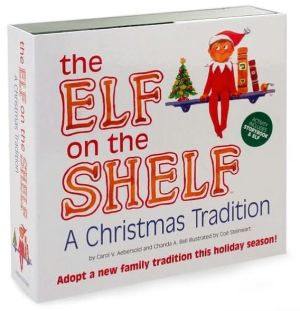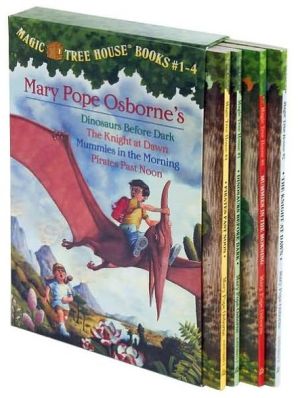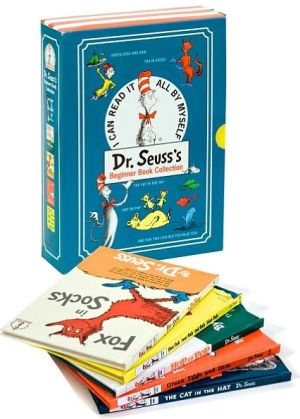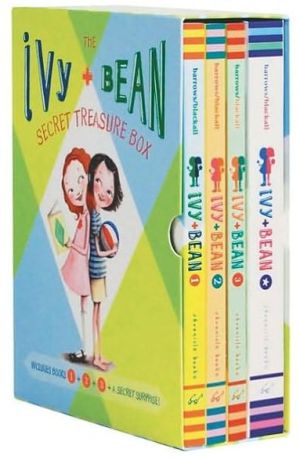The View from Saturday
HOW HAD MRS. OLINSKI CHOSEN her sixth-grade Academic Bowl team? She had a number of answers. But were any of them true? How had she really chosen Noah and Nadia and Ethan and Julian? And why did they make such a good team? \ It was a surprise to a lot of people when Mrs. Olinski's team won the sixth-grade Academic Bowl contest at Epiphany Middle School. It was an even bigger surprise when they beat the seventh grade and the eighth grade, too. And when they went on to even greater victories,...
Search in google:
HOW HAD MRS. OLINSKI CHOSEN her sixth-grade Academic Bowl team? She had a number of answers. But were any of them true? How had she really chosen Noah and Nadia and Ethan and Julian? And why did they make such a good team? It was a surprise to a lot of people when Mrs. Olinski's team won the sixth-grade Academic Bowl contest at Epiphany Middle School. It was an even bigger surprise when they beat the seventh grade and the eighth grade, too. And when they went on to even greater victories, everyone began to ask: How did it happen? It happened at least partly because Noah had been the best man (quite by accident) at the wedding of Ethan's grandmother and Nadia's grandfather. It happened because Nadia discovered that she could not let a lot of baby turtles die. It happened when Ethan could not let Julian face disaster alone. And it happened because Julian valued something important in himself and saw in the other three something he also valued. Mrs. Olinski, returning to teaching after having been injured in an automobile accident, found that her Academic Bowl team became her answer to finding confidence and success. What she did not know, at least at first, was that her team knew more than she did the answer to why they had been chosen. This is a tale about a team, a class, a school, a series of contests and, set in the midst of this, four jewel-like short stories -- one for each of the team members -- that ask questions and demonstrate surprising answers.Publishers WeeklyThis 1996 Newbery Medal winner charts the ties that bind four members of an extraordinarily successful 6th-grade quiz bowl team. In a starred review, PW called it "glowing with humor and dusted with magic." Ages 8-12.
Mrs. Eva Marie Olinski always gave good answers. Whenever she was asked how she had selected her team for the Academic Bowl, she chose one of several good answers. Most often she said that the four members of her team had skills that balanced one another. That was reasonable. Sometimes she said that she knew her team would practice. That was accurate. To the district superintendent of schools, she gave a bad answer, but she did that only once, only to him, and if that answer was not good, her reason for giving it was.\ The fact was that Mrs. Olinski did not know how she had chosen her team, and the further fact was that she didn't know that she didn't know until she did know. Of course, that is true of most things you do not know up to and including the very last second before you do. And for Mrs. Olinski that was not until Bowl Day was over and so was the work of her four sixth graders.\ They called themselves The Souls. They told Mrs. Olinski that they were The Souls long before they were a team, but she told them that they were a team as soon as they became The Souls. Then after a while, teacher and team agreed that they were arguing chicken-or-egg.\ Whichever way it began — chicken-or-egg, team-or-The Souls — it definitely ended with an egg. Definitely, an egg.\ People still remark about how extraordinary it was to have four sixth graders make it to the finals. There had been a few seventh graders scattered among the other teams, but all the rest of the middle school regional champs were eighth graders. Epiphany had never before won even the local championship, and there they were, up on stage, ready to compete for the state trophy. All four members of Maxwell, the other team in the final round, were in the eighth grade. Both of the Maxwell boys' voices had deepened, and the girls displayed lacy bra straps inside their T-shirt necklines. The fact that the necklines were outsized and that the two pairs of straps matched — they were apricot-colored — made Mrs. Olinski believe that they were not making a fashion statement as much as they were saying something. To her four sixth graders puberty was something they could spell and define but had yet to experience.\ Unlike football bowls, there had been no season tallies for the academic teams. There had been no best-of-five. Each contest had been an elimination round. There were winners, and there were losers. From the start, the rule was Lose one game, and you are out.\ So it was on Bowl Day. At the start of the day, there had been eight regional champs. Now there were two — Epiphany and Maxwell.\ It was afternoon by the time they got to the last round, and Mrs. Olinski sat shivering in a windowless room in a building big enough and official enough to have its own zip code. This was Albany, the capital of the state of New York. This was the last Saturday in May, and some robot — human or electronic — had checked the calendar instead of the weather report and had turned on the air-conditioning. Like everyone else in the audience, Mrs. Olinski wore a short-sleeved T-shirt with her team's logo across the front. Maxwell's were navy; Epiphany's were red and were as loud as things were permitted to get in that large, cold room. The audience had been asked not to whistle, cheer, stomp, hold up signs, wave banners, or even applaud. They were reminded that this Bowl was for brains, not brawn, and decorum — something between chapel and the order of the day.\ Epiphany sat on one side of a long table; Maxwell, the other. At a lectern between them stood the commissioner of education of the state of New York. He smiled benevolently over the audience as he reached inside his inner breast pocket and withdrew a pair of reading glasses. With a flick of his wrist he opened them and put them on.\ Mrs. Olinski hugged her upper arms and wondered if maybe it was nerves and not the quartering wind blowing from the ceiling vents that was causing her shivers. She watched with baited (and visible) breath as the commissioner placed his hand into a large clear glass bowl. His college class ring knocked bottom. (Had the room been two degrees colder, the glass would have shattered.) He withdrew a piece of paper, unfolded it, and read, "What is the meaning of the word calligraphy and from what language does it derive?"\ A buzzer sounded.\ Mrs. Olinski knew whose it was. She was sure of it. She leaned back and relaxed. She was not nervous. Excited, yes. Nervous, no.\ The television lights glanced off Noah Gershom's glasses. He had been the first chosen.
\ Publishers Weekly\ - Publisher's Weekly\ This 1996 Newbery Medal winner charts the ties that bind four members of an extraordinarily successful 6th-grade quiz bowl team. In a starred review, PW called it "glowing with humor and dusted with magic." Ages 8-12.\ \ \ \ \ Children's Literature\ - Susie Wilde\ This multi-layered novel tells the story of four sixth-grade children selected for an Academic Bowl team. Below the plot surface lies a web of interconnections. Though at first the children seem quite different, two of the children are "related" when their grandparents marry and a third is, through a string of accidents, best man at this wedding. The fourth boy is an East Indian newly arrived in America, who unites the team with his instincts about their shared sensibilities. Throughout, there is a strong sense of larger forces at work. Who put the team together? Mrs. Olinski, the paraplegic teacher who can't explain her choices to the administration or herself? Or did the children chose her? And why do each of the children's specific areas of expertise show up in the contest questions? Konigsburg brilliantly quarters the story's telling, letting each child tell a part while Mrs. Olinski provides the narrative mortar. And the telling is a connected flow of story that, as with the team, is a very great whole. 1998 (orig.\ \ \ Children's Literature\ - Donna Brumby\ The expertise and experience of the author glimmer in this intriguing novel about the journey and triumph of Epiphany Middle School's sixth-grade scholastic bowl team. Already showing up on several "best of the year" lists, The View from Saturday is a solidly crafted, but not uncomplicated, story that does deserve the attention of young teens. But its quaint style, slightly artificial young characters, and emphasis on retirement living may keep it from reaching its intended audience. Sadly, the unappealing book cover on the hardback won't be of help to teachers and librarians attempting to "sell" this book either. Inclusion on reading lists, and hopefully a more attractive paperback version in the future, may be the only hopes for this book that many readers will probably really enjoy if they ever give it a try. A Newberry Medal winner.\ \ \ \ \ Children's Literature\ - Jan Lieberman\ "What is the meaning of the word calligraphy and from what language does it derive? Noah Gershom's buzzer sounded first." So begins a chapter on Noah's life and how he became part of 'The Souls,' a team of 4 sixth graders from Epiphany Middle School who are participating in the district's Academic Bowl. Guided by Mrs. Olinski, their teacher, a paraplegic, the 4 soon become soul mates. A tight bond forms between them as they mix and match their idiosyncrasies and their personalities. This is a story of friendship, compassion, growth, and the empowerment of learning. It is also about confidence and success and the value of always having goals. Finally, Mrs. Olinski understands how and why she chose Noah, Nadia, Ethan and Julian to represent their school. Winner of the 1997 Newbery Medal.\ \ \ \ \ School Library JournalGr 4-6E.L. Konigsburg's Newbery Award winner Atheneum, 1996 makes a smooth transition into this medium. Mrs. Olinski and her four bright students make a dynamic team as read by this cast of competent actors. In this story of four sixth graders' victory in an Academic Bowl, Noah, Nadia, Ethan and Julian each tell their story. The foursome and the supporting characters come to life while Mrs. Olinski blossoms. Careful prose is well adapted into a funny, realistic, caring portrait through clear and varied voices. No bells and whistles are needed to bring this winner to life, just a skilled reading. Put this on the shelf and watch it fly.Angela J. Reynolds, West Slope Community Library, Portland, OR\ \ \ \ \ Kirkus ReviewsAdmirable acts, challenging ideas, and grace notes positively festoon this superb tale of four sixth graders and a paraplegic teacher forming a junior high Academic Bowl team that sweeps away the competition.\ The plot is composed of interwoven puzzles. What prompts Mrs. Olinski to choose Noah, Nadia, Ethan, and Julian for the team over the usual overachievers and honor students in her class? What do they know about her, themselves, and each other that puts them so precisely on the same wavelength and gives them such complementary knowledge and experience? Each has a tale to tell, in the course of which all four witness acts of kindness and respect that teach them to find those feelings in themselves and others. In wry prose filled with vivid imagery, information, and often oblique clues, Konigsburg takes her team through bonding, drills, and a series of contests as suspenseful as any in sports fiction; the children and Mrs. Olinski's public triumph mirror inner epiphanies of rare depth and richness. The large cast, looping plot line, and embedded stories with different narrators require careful sorting, but the effort is eminently worthwhile, and Konigsburg kindly provides answers at the end.\ \ \
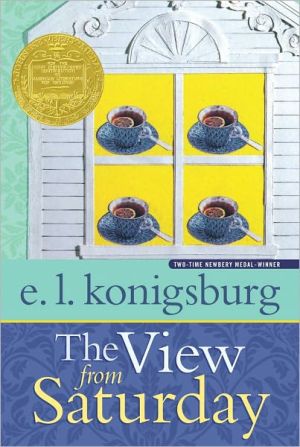
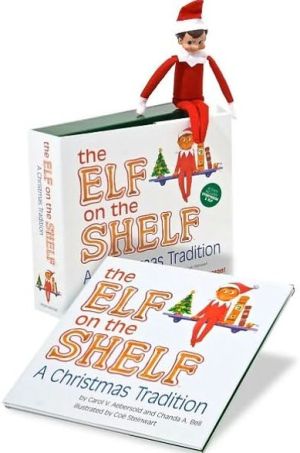
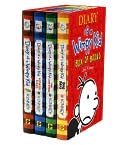
![Tickle Monster Laughter Kit [With Tickle Mitts] Tickle Monster Laughter Kit [With Tickle Mitts]](/application/data/covers/98/35/9781932319835.jpg)
